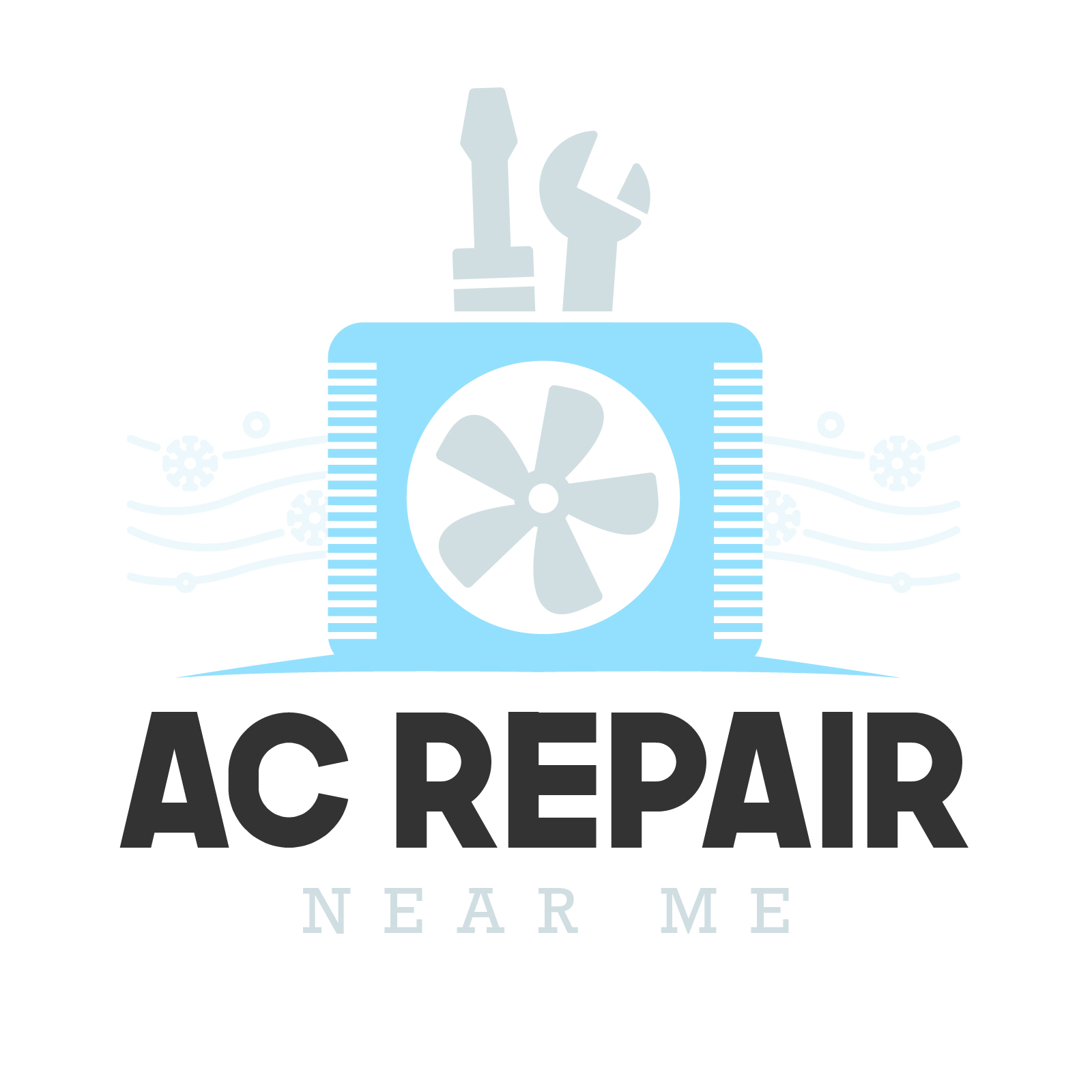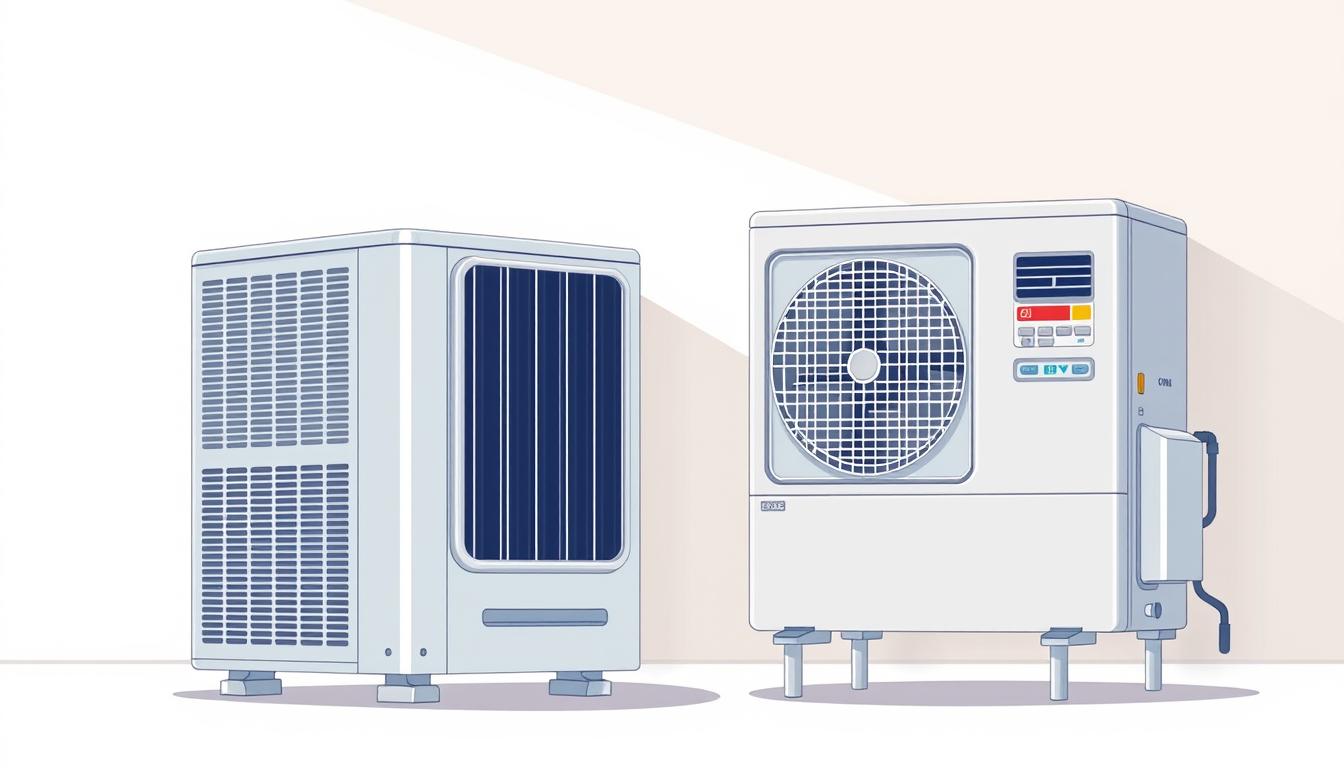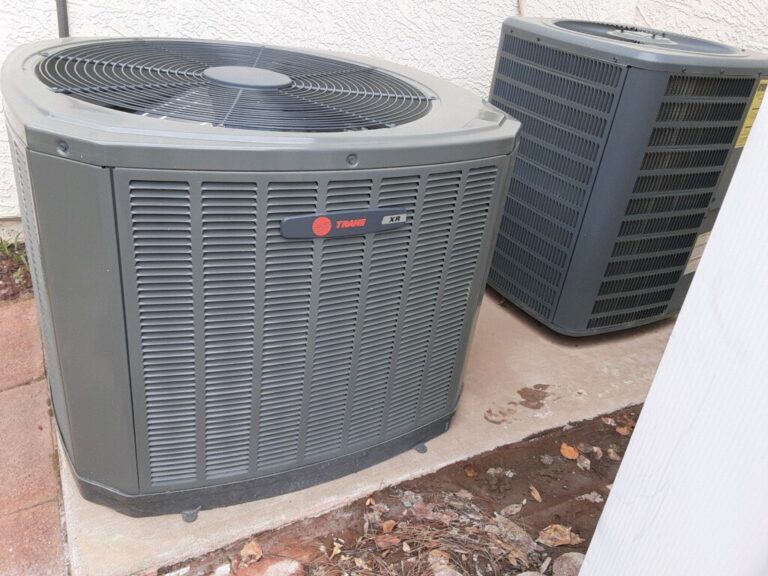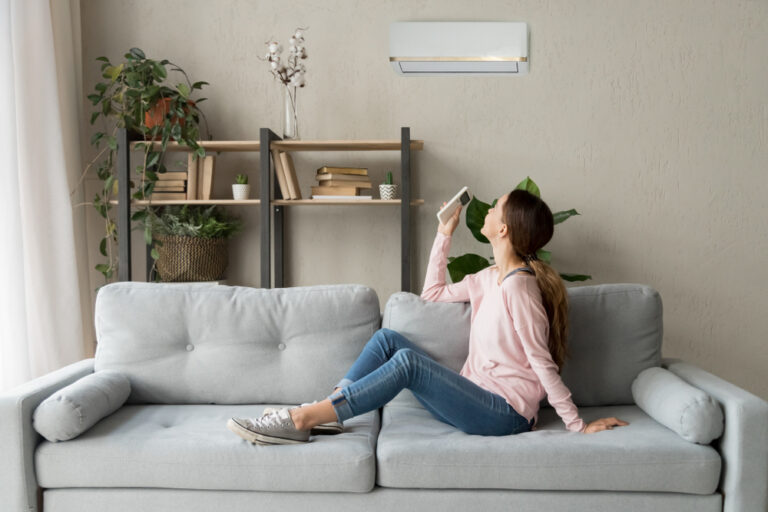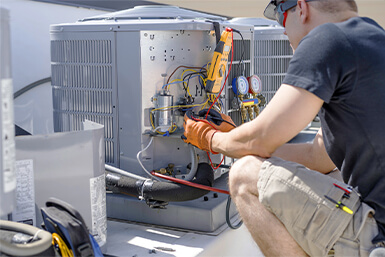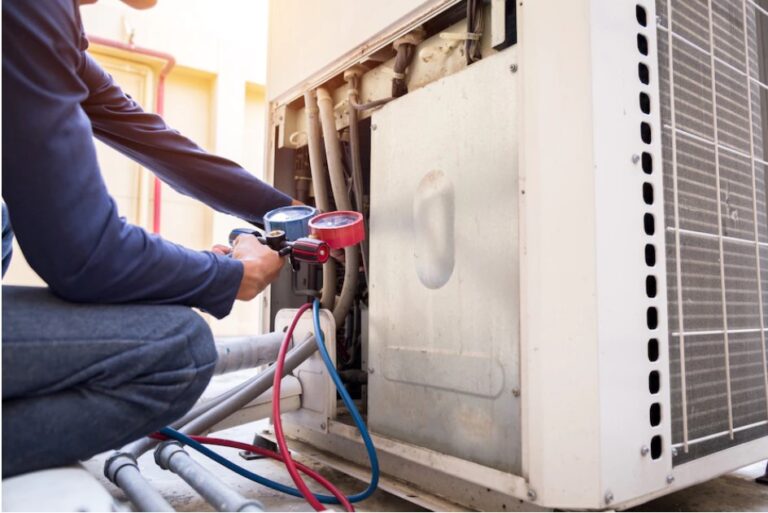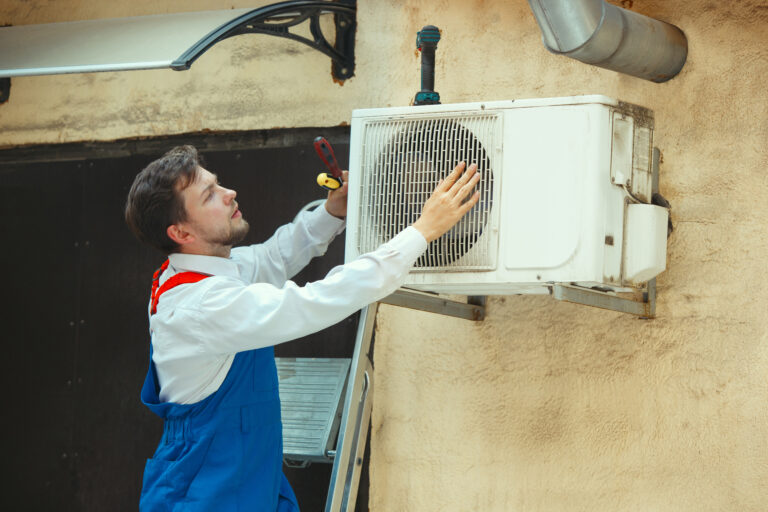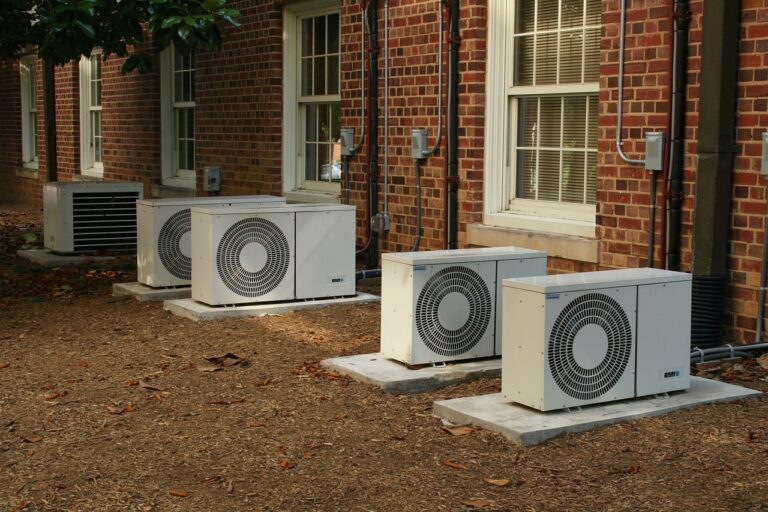Heat Pump vs Air Conditioner: What’s the Difference?
When it comes to maintaining a comfortable indoor temperature, homeowners often find themselves deciding between a heat pump and an air conditioner. Both systems are designed to regulate indoor temperatures, but they operate in distinct ways.
Both heat pumps and air conditioners use compressed refrigerant to transfer heat from inside your home to the outside. While air conditioners are primarily used for cooling, heat pumps can provide both heating and cooling, making them a versatile option for homeowners.
This comprehensive guide will explore the key differences between these two systems, helping you make an informed decision about which one is best for your needs.
Key Takeaways
- Understand the fundamental differences between heat pumps and air conditioners.
- Learn how both systems work to maintain comfortable indoor temperatures.
- Discover the key factors that set them apart in terms of functionality and efficiency.
- Explore the technical aspects, cost considerations, and environmental impacts of both systems.
- Determine which system is better suited for your specific home environment.
Understanding the Basics of Home Cooling and Heating
Understanding the basics of home cooling and heating is crucial for maintaining a comfortable indoor environment. Homeowners often rely on HVAC systems to regulate indoor temperatures and air quality.
HVAC systems are integral to a home’s heating and cooling setup, operating on electricity and utilizing refrigerant to facilitate heat transfer. As John Smith, a renowned HVAC expert, once said, “A well-designed HVAC system is the backbone of a comfortable home.”
The Role of HVAC Systems in Home Comfort
HVAC systems play a crucial role in maintaining comfortable indoor temperatures year-round, controlling not just temperature but also humidity and air quality. For more information on replacing your HVAC system, you can visit this link.
Key Components of Modern Climate Control
Modern climate control systems consist of several key components working together: the outdoor unit (condenser), indoor unit (evaporator/air handler), refrigerant lines, and control systems. Both heat pumps and air conditioners rely on the principles of thermodynamics, using refrigerant to absorb heat from one area and release it in another.
The efficiency of home climate control depends on proper sizing, installation, and maintenance of all system components working in harmony. Understanding these basics helps homeowners make informed decisions about their heating and cooling needs.
What Is a Heat Pump?
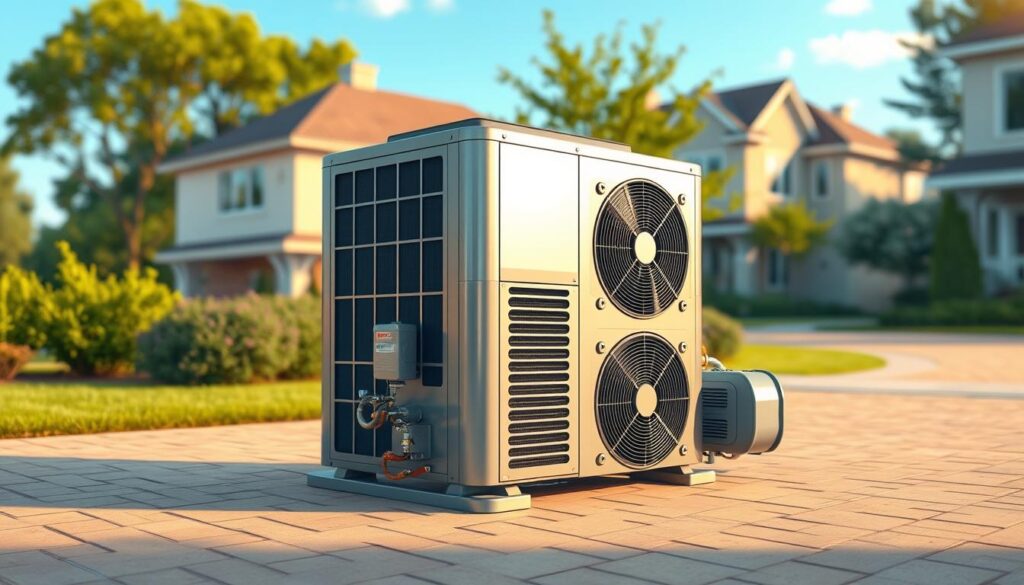
When it comes to home climate control, a heat pump stands out as a versatile and efficient solution. A heat pump is an integral component of a home’s heating and cooling setup, typically installed outside the house. It serves a dual purpose: it can both cool and heat your home, making it an attractive option for those seeking an all-in-one HVAC system.
How Heat Pumps Work
A heat pump works by transferring heat rather than generating it, which makes it an energy-efficient alternative to traditional heating and cooling systems. During the cooling mode, it extracts heat from inside your home and releases it outdoors through a refrigeration cycle, functioning similarly to an air conditioner.
In heating mode, the process is reversed: the heat pump extracts heat from the outdoor air, even in cold temperatures, and transfers it inside your home. This is made possible by the reversing valve, a key component that distinguishes a heat pump from a standard air conditioner, allowing the system to switch between heating and cooling modes.
Types of Heat Pump Systems
There are several types of heat pump systems available, catering to different needs and climates. The most common type is the air-source heat pump, followed by ground-source (geothermal) heat pumps, and ductless mini-split heat pumps. Modern heat pumps feature advanced technologies like variable-speed compressors and enhanced defrost cycles, enabling them to operate efficiently even in colder climates.
By understanding how heat pumps work and the various types available, homeowners can make informed decisions about their heating and cooling needs.
What Is an Air Conditioner?
The primary function of an air conditioner is to remove heat and humidity from indoor environments, providing a cooler and more comfortable living space. Air conditioning is a process that involves the removal of heat and humidity from indoor air to achieve this comfort.
An air conditioner operates through a system comprising various components, including a compressor, condenser coil, evaporator coil, expansion valve, and refrigerant. The process begins with the compressor, which pressurizes the refrigerant gas, heating it up before it is sent to the condenser coil. Here, the heated gas releases its heat to the outdoor environment and condenses into a liquid.
How Air Conditioners Work
The cooling process continues as the liquid refrigerant travels to the indoor evaporator coil, where it expands and absorbs heat from the indoor air, thus cooling the environment. This process is crucial for maintaining a comfortable indoor climate, especially during hot weather conditions.
Key Components and Their Functions:
- The compressor pressurizes the refrigerant, initiating the cooling cycle.
- The condenser coil releases heat outdoors, allowing the refrigerant to condense.
- The evaporator coil absorbs heat from indoor air, cooling it down.
- The expansion valve regulates the flow of refrigerant into the evaporator coil.
Common Air Conditioner Configurations
Air conditioners come in various configurations to suit different needs and installations. Common types include central split systems, packaged units, and ductless mini-split systems. Each configuration has its advantages and is suited to specific applications.
| Configuration Type | Description | Advantages |
|---|---|---|
| Central Split Systems | Outdoor condenser and indoor air handler | Efficient cooling for larger spaces |
| Packaged Units | All components in one outdoor cabinet | Easy installation and maintenance |
| Ductless Mini-Split Systems | Individual units for specific rooms or zones | Flexible and energy-efficient |
As noted by industry experts, “The choice of air conditioner configuration depends on factors such as the size of the space, insulation, and specific cooling needs.” Effective air conditioning is not just about cooling the air; it’s about creating a comfortable indoor environment.
Heat Pump vs AC: Key Similarities
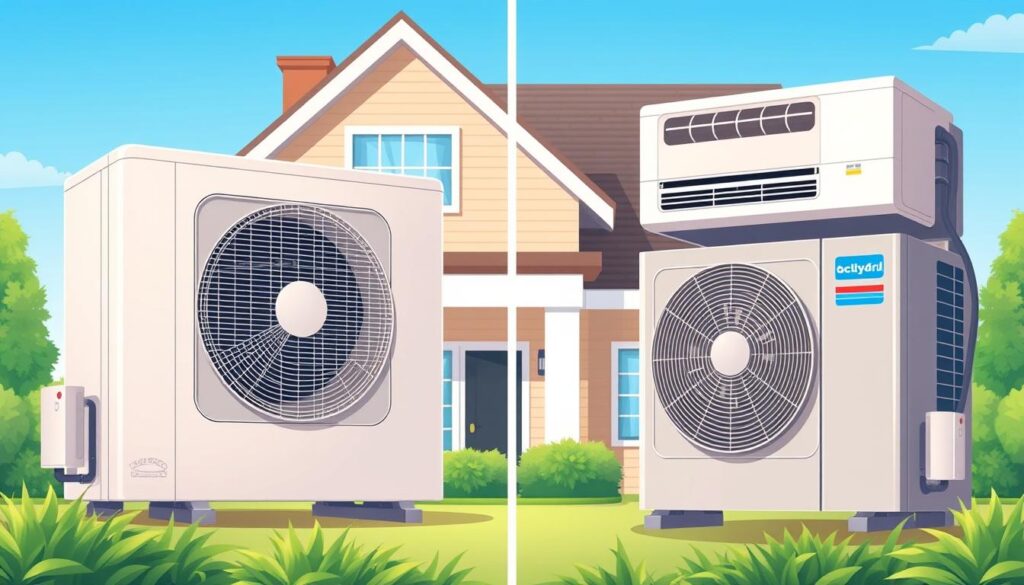
Despite their differences, heat pumps and air conditioners have several key similarities. Both are designed to provide effective cooling solutions for homes. At their core, they operate on the same principle: using compressed refrigerant to transfer heat from inside the home to the outside.
Cooling Function Comparison
In cooling mode, heat pumps and air conditioners function virtually identically, utilizing the same refrigeration cycle to remove heat from indoor spaces. This means that during the summer months, both systems can provide similar cooling comfort. The process involves a compressor, condenser coil, and evaporator coil working in tandem to transfer heat outside.
Both systems are available in a range of efficiency ratings (SEER), with higher-efficiency models offering similar energy savings during cooling operation. This allows homeowners to choose a system that not only meets their cooling needs but also aligns with their energy efficiency preferences.
Component and Installation Parallels
The major components of heat pumps and air conditioners are similar, including a compressor, condenser coil, and evaporator coil. They also share comparable installation requirements, such as similar electrical connections, refrigerant line configurations, and ductwork considerations. Maintenance procedures for cooling functions are nearly identical between the two systems, including regular filter changes, coil cleaning, and refrigerant level checks.
By understanding these similarities, homeowners can make more informed decisions when choosing between a heat pump and an air conditioner for their cooling needs.
Major Differences Between Heat Pumps and Air Conditioners
When it comes to home climate control, understanding the differences between heat pumps and air conditioners is crucial for making an informed decision. While both systems are used for cooling, their capabilities and functionalities differ significantly, particularly when it comes to heating.
Heating Capabilities
The primary difference between heat pumps and air conditioners lies in their ability to provide heating. Heat pumps are designed to offer both heating and cooling by reversing the flow of refrigerant, allowing them to extract heat from the outside air even in cold temperatures and transfer it inside. In contrast, air conditioners are solely designed for cooling and must be paired with a separate heating system, typically a furnace, to provide year-round comfort.
For more detailed information on the differences between heat pumps and air conditioners, you can visit Trane’s resource page.
Operational Versatility
Heat pumps operate year-round, providing both heating and cooling, which can lead to more wear and tear compared to air conditioners that only operate during warm months. However, the versatility of heat pumps makes them ideal for moderate climates. In regions with extreme cold, a dual-fuel system combining a heat pump with a gas furnace might be more beneficial.
In summary, while heat pumps and air conditioners share some similarities, their differences in heating capabilities and operational versatility are significant factors to consider when choosing the right HVAC system for your home.
Cost Comparison: Heat Pumps vs Air Conditioners
When considering the installation of a new HVAC system, understanding the cost differences between heat pumps and air conditioners is crucial. The total cost of ownership for these systems encompasses not only the initial purchase price but also installation expenses and long-term operating costs.
Initial Purchase and Installation Costs
The initial cost of both heat pumps and air conditioners can vary widely, typically ranging from $3,000 to $15,000, depending on factors such as unit size, efficiency, and additional features. Generally, heat pumps have a higher upfront cost compared to air conditioners due to their dual functionality and additional components.
- The cost of heat pumps is influenced by their complexity and the need for additional components like reversing valves.
- Installation costs for both systems depend on unit size, efficiency rating, and whether existing ductwork can be utilized.
- Homeowners should also consider the potential for rebates and tax incentives for high-efficiency systems.
Long-term Operating Expenses
While heat pumps may have higher initial costs, they can offer significant long-term savings by eliminating the need for a separate heating system, particularly in moderate climates. However, in regions with extreme cold, supplemental electric resistance heating may be required, potentially increasing operating costs.
- Operating expenses vary based on local utility rates, climate conditions, and system efficiency.
- Heat pumps are generally more cost-effective in regions with moderate heating needs.
- Homeowners should evaluate total lifecycle costs, including maintenance requirements and projected energy consumption.
Energy Efficiency and Environmental Impact
Heat pumps and air conditioners are not just about comfort; their energy efficiency and environmental impact are critical factors in their overall value.
Both systems have evolved to offer high efficiency, which is crucial for reducing energy consumption and minimizing their carbon footprint.
SEER and HSPF Ratings Explained
SEER (Seasonal Energy Efficiency Ratio) and HSPF (Heating Seasonal Performance Factor) are metrics used to measure the efficiency of air conditioners and heat pumps, respectively.
- SEER ratings measure cooling efficiency, with higher ratings indicating better efficiency.
- HSPF ratings measure heating efficiency for heat pumps, with higher values representing greater efficiency.
- Modern HVAC systems can achieve SEER ratings of 18 or higher, significantly reducing energy consumption.
Carbon Footprint Considerations
The environmental impact of these systems largely depends on the source of electricity in your region.
Heat pumps typically have a smaller carbon footprint because they don’t burn fossil fuels for heating and can operate on renewable electricity.
- Areas powered by renewable energy offer the greenest operation for both heat pumps and air conditioners.
- Variable-speed and inverter-driven systems offer the highest efficiency by adjusting output to match demand.
Choosing the Right System for Your Home
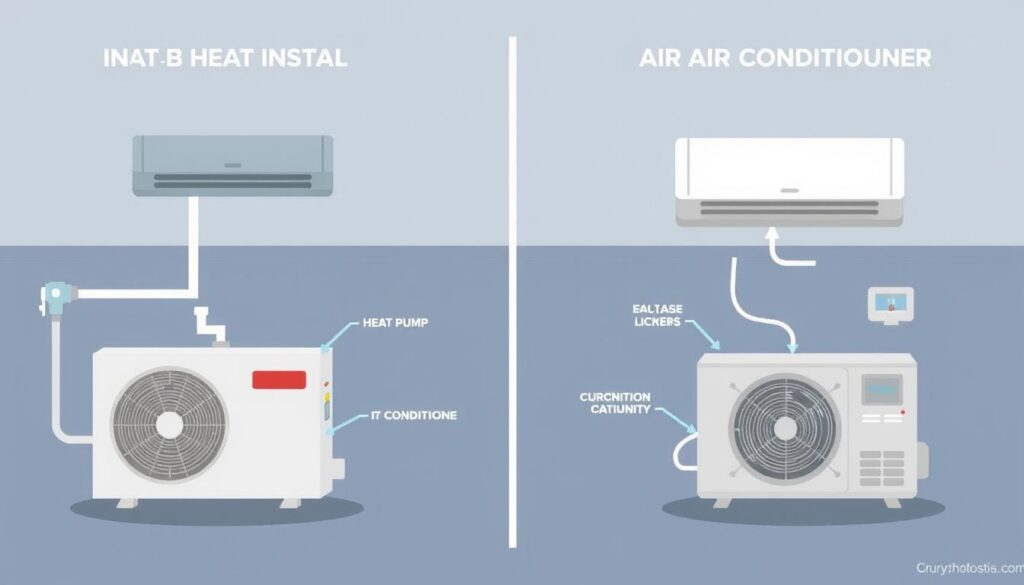
When it comes to choosing between a heat pump and an air conditioner, your home’s specific needs and climate play a crucial role. The climate you live in is a major factor; heat pumps excel in mild climates but have limitations in environments with longer, colder winters.
Consider your home’s existing infrastructure and future plans. For homes in areas with extreme cold, a dual-fuel system combining a heat pump with a gas furnace is often ideal. If you have existing gas lines and furnaces, pairing a new air conditioner with the existing furnace might be more economical.
Key factors to consider include your home’s size, insulation quality, and local utility rates. Consulting with HVAC professionals for a proper load calculation is essential. Additionally, if you’re planning to add solar panels, a heat pump might be a more compatible choice.
